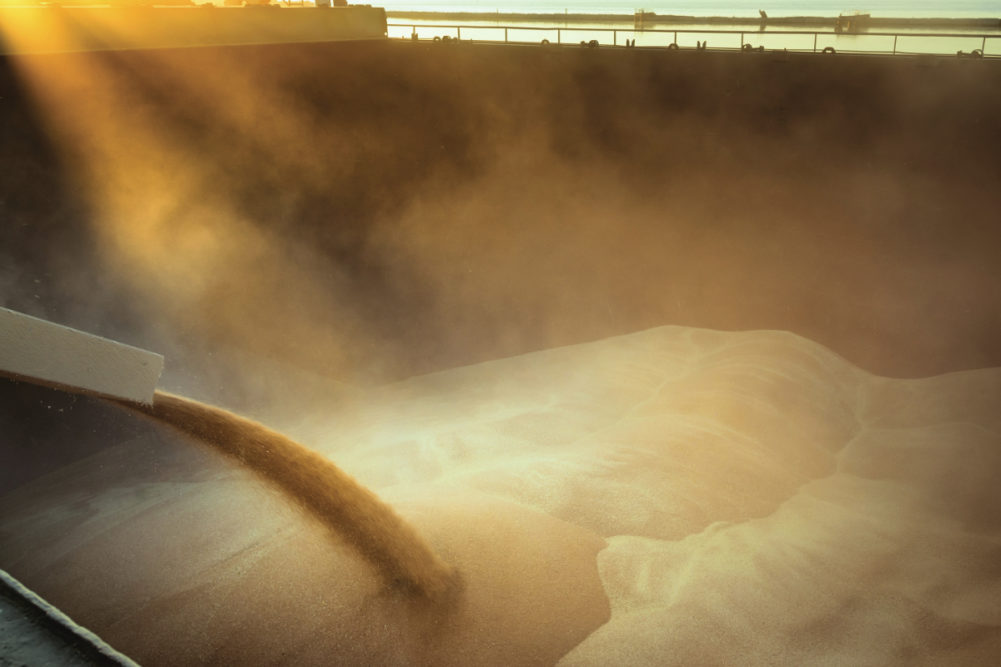WASHINGTON, DC, US — Historically, many countries have responded to severe global economic downturns by limiting food exports, believing it would increase domestic food security. But during the first few months of the coronavirus (COVID-19) pandemic, a relatively small number of countries have gone down this familiar path, according to an international trade expert.
Simon Evenett, professor of International Trade and Economic Development at the University of St. Gallen, Switzerland, surmises that many nations have finally learned that limiting or banning food exports during difficult economic times doesn’t necessarily help them achieve their goal.
Speaking during the National Press Association’s webinar, “Global Trade: A Pandemic Primer,” on May 12, Evenett said the impact of trade restrictions during difficult economic times on the countries implementing them is often, much to their surprise, negative.
He said that since 1970, there have been six major surges in food commodity prices.
“This tends to trigger countries putting export curbs on food,” he said. “The idea is they feel they have to restrict exports to supply the domestic market. The last big outburst of these export curbs occurred from 2008-11 (during the Great Recession).
“Studies show that these export curbs increase world price volatility in food and had knock-on effects on import countries. But the most important finding of all was that in most countries that curbed exports, the domestic food prices did not fall. That’s because normally it’s a domestic disruption that’s a dominant factor.”
Evenett noted that during the Great Recession, more than 100 countries limited or banned food exports, but only 27 countries have taken similar measures during the first few months of the current crisis. The world first became aware in January of COVID-19, which originated in China and has since spread to virtually every country in the world, infecting more than 4.4 million people and causing nearly 300,000 deaths as of May 13.
“The idea that the food supply in the US or anywhere else is being dramatically impacted by export curbs is not a worry at the moment,” Evenett said.
One country that has decided limiting exports is in its best interest is Russia, where the number of COVID-19 cases has surged in recent weeks. The world’s top wheat exporter announced two weeks ago that it would limit wheat exports for the remainder of the 2019-20 marketing year.
When the announcement was made, there was concern it would lead to a spike in wheat prices. But Russia’s decision coincided with Australia and the EU announcing they were increasing wheat exports by nearly 3 million tonnes combined, Evenett said.
“Those two changes offset entirely what was happening with Russia, and the price of wheat therefore has not spiked,” he said.
Vietnam, another country with a history of limiting exports in times of crisis, initially banned rice exports in the early stages of the COVID-19 pandemic but has since changed course, Evenett noted.
“Vietnam has progressively stepped back from that position as it realized it was actually impoverishing its own farmers,” he said of the world’s third-leading rice exporter.
Although there is plenty of resistance to globalization with nationalist movements growing in countries such as the United States and the United Kingdom, Evenett urged nations to resist the temptation to seal off food supplies from the world.
“Globalization is part of the solution and needs to be leveraged by tapping overseas markets to mitigate domestic supply disruptions,” he said.
Echoing this theme was Darci Vetter, former chief agricultural negotiator and deputy undersecretary of agriculture for the United States, who also took part in the webinar and pointed to four “broken links” in the current global food supply chain.
The first is disruption in the transportation networks that normally move food efficiently around the world.
“The FAO says 1 in every 5 calories consumed in the world crosses borders,” she said. “That’s a 50% increase in food trade from 20 years ago. Almost all countries are both importers and exporters of food. What happened is there’s been an 80% decrease in airline traffic globally during this crisis. What people don’t always realize is the cargo holds in planes are typically full of perishable items that need to move quickly. The lack of access to key markets because of the decline in flights has made it very challenging.”
Another issue has been the sudden shutdown of restaurants and other institutions that serve food.
“Overnight we went from a country where people ate more than 50% of their calories away from home to eating at home all the time,” Vetter said. “So, the supply chain needed to move more of the food into the retail setting. That takes investment in labor and equipment and time to reconfigure those things. It all happened in a relatively short period of time and we don’t know how long these changes will occur, which increases the uncertainty and really makes suppliers question whether it’s worth their investment to shift the supply chain.”
Vetter said the pandemic also has caused labor shortages due to illness and government orders to shelter in place, and it has led to a massive loss of income around the globe, which has impacted eating habits.
“In the US we have over 30 million people unemployed,” she said. “Some are worried about even being able to afford their next meal.”
She added that the pandemic has put added downward pressure on crop prices that already were in a prolonged slump, creating even more uncertainty at the start of the food supply chain.
The bleak economic picture might make it difficult for some producers to stay in business, Vetter said.
“There are many growers who are highly leveraged and will need to know they have a market for the next crop to get financing to plant it,” she said. “The uncertainty about the opening up of economies and how long it will take the market to return to normal creates uncertainty involving financing for growers.”
Follow our breaking news coverage of the coronavirus/COVID-19 situation.





